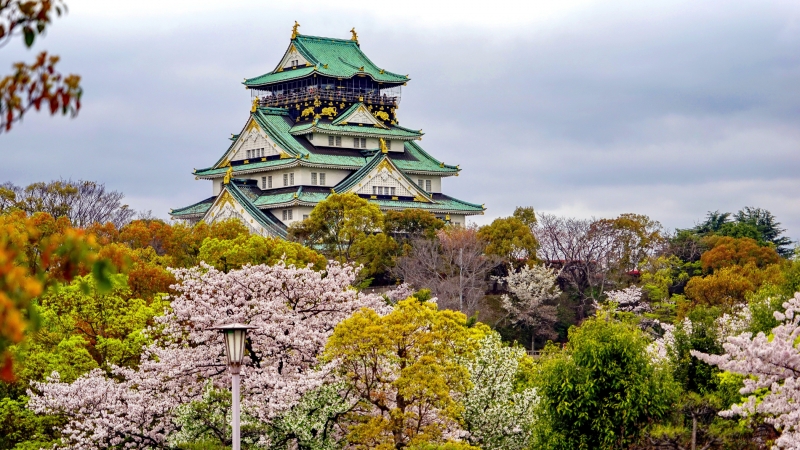This Osaka town is famous for its peaceful and poetic beauty. When autumn comes, this place seems to put on a new coat with rows of red maple trees stretching along the lake. The red maple leaves are like small flames burning a corner of the sky, reflected on the calm lake surface, creating a beautiful ink painting. The chirping of birds combined with the rustling of leaves underfoot create a romantic autumn symphony. Not only beautiful, maple leaves are also processed by local people into a famous dish - fried maple leaves (Tempura Momiji).
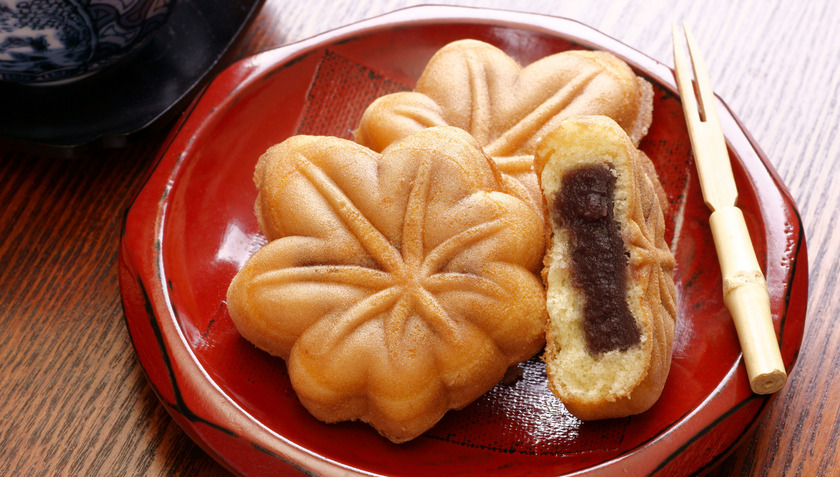
Maple leaves become a sought-after food in Japan
Delicious dishes from maple leaves
Crispy fried maple leaves, also known as Tempura Momiji, have become an indispensable specialty every autumn in Minoh, Osaka, Japan. Different from other tempura dishes, Tempura Momiji has a unique beauty, not only in its crispy taste but also in its elaborate and traditional preparation process. Each maple leaf is carefully selected and undergoes a year-long salting process before being processed into a complete dish. With this special flavor, visitors not only come to Minoh to admire the brilliant autumn scenery, but also to enjoy the golden, crispy fried maple leaves that melt in their mouths.
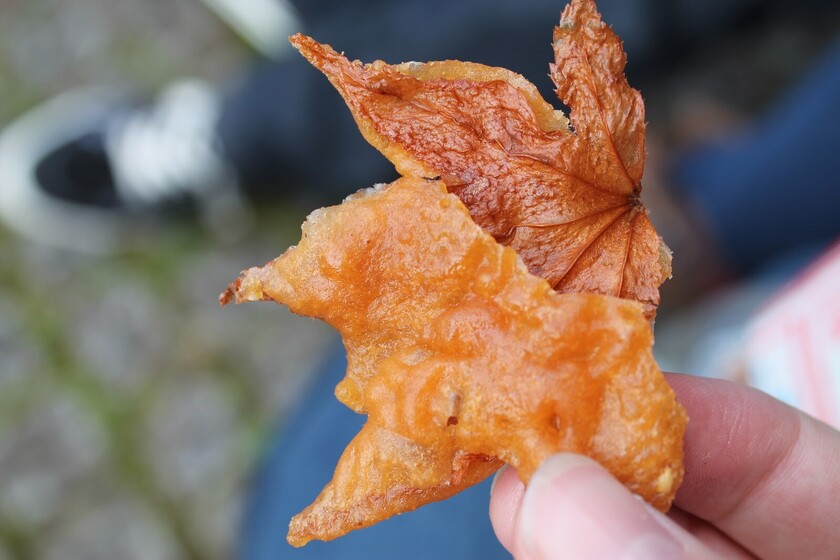
Tempura maple leaf – Japanese dish that takes a whole year to prepare
Legend has it that this dish originated from an ascetic monk 1,300 years ago. He came up with the idea of making this dish by marinating maple leaves with salt for a year, then coating them in flour and frying them in rapeseed oil.
It sounds like the process of making this dish is as simple as fried vegetables and fruits, but in reality it takes much more time and all the steps are done by hand.

Tempura is a Japanese battered, deep-fried dish with seafood and vegetables as its main ingredients.
In fact, the process of making fried maple leaves is a meticulous one that takes up to a year. Through a year-long salting process, the maple leaves are washed, rolled in tempura batter, and fried, creating a popular snack in Minoh.
First, the maple leaves that have fallen from the trees are picked up from the mountains, and the locations where they are picked are carefully selected to ensure they are clean. Interestingly, not all maple leaves are edible; the Japanese prefer yellow maple leaves because the veins are softer and easier to eat. In particular, yellow maple leaves retain their color when salted, becoming more attractive after being fried.
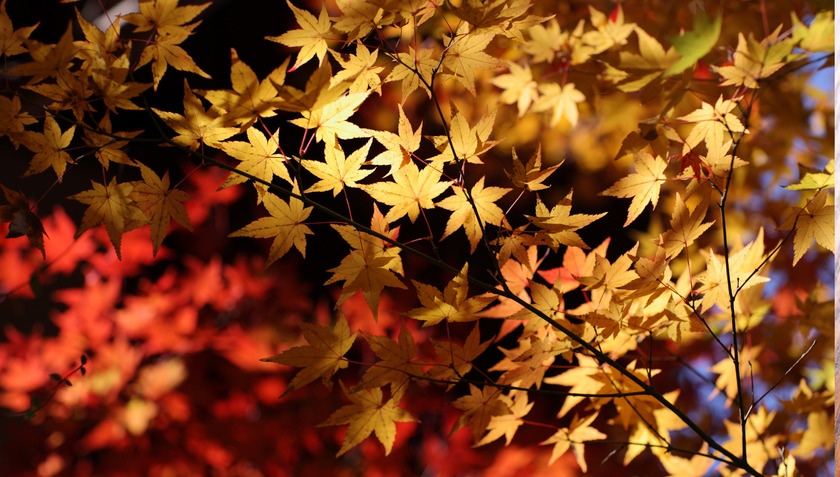
Meticulous dish from the leaf selection stage
Next, the maple leaves are salted in large vats, a process that can take up to a year. Salting not only softens the leaves, but also removes the pungent smell, making the crispy fried maple leaves more appealing.
After a year of salting, the maple leaves are removed from the vat, their stems are removed, and the leaves are washed to remove any remaining salt. They are then dipped in a mixture of sugar and sesame seeds and fried until golden brown.

In Japan, this maple leaf tempura (Tempura Momiji) dish has surprised and delighted many tourists when they enjoy this dish.
After being fried, the maple leaves are crispy, combining the sweetness of sugar and the slight saltiness of the salt soaked in the leaves, creating a harmonious flavor. This Japanese dish is often preserved in convenient, beautiful paper packages, making it easy for diners to take away. In fact, the maple leaves after being marinated have no flavor, but only have the crispiness of a snack.
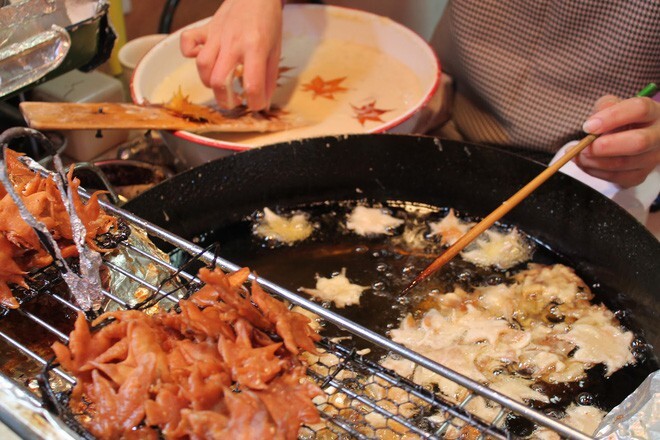
After frying, the maple leaves will have the characteristic crispiness of tempura. In terms of flavor, this tempura dish is salty, sweet, with a little bit of sesame flavor, so it is very easy to eat.
More than just a dish
Tempura Momiji is not just a common dish, but also carries deep cultural value. It shows the ingenuity and meticulousness in each step of preparation and reflects the connection between humans and nature. Using maple leaves in cuisine is also a way for Minoh people to honor the beauty of autumn, making nature a part of the meal.
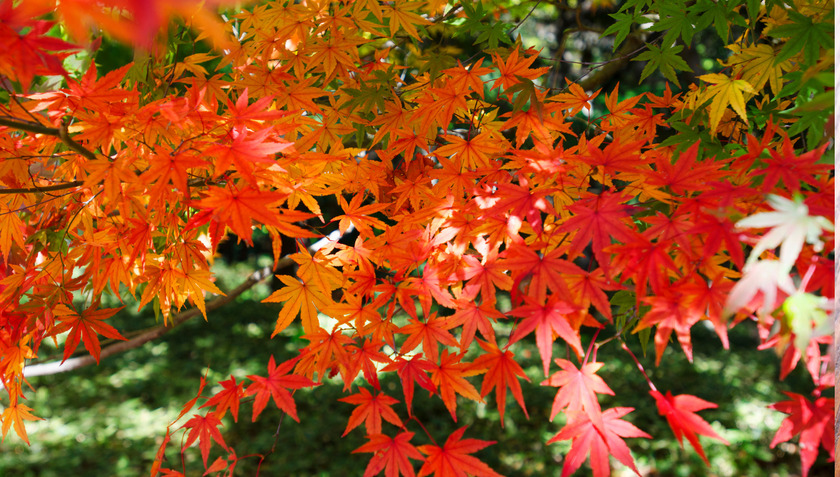
Food is the whole cultural story of the land of the rising sun.
When autumn comes, the whole town of Minoh is dyed in the red and yellow of maple leaves. The leaves fall down, creating a velvet carpet spread across the small roads. In the chilly air, the scent of maple leaves blends with the smell of cooking oil, creating a warm, cozy feeling. To make a perfect Tempura Momiji, the craftsman must have skillful hands and a heart that loves the job. They meticulously select each leaf, season it with enough salt, then gently dip it in flour and fry it in hot oil.
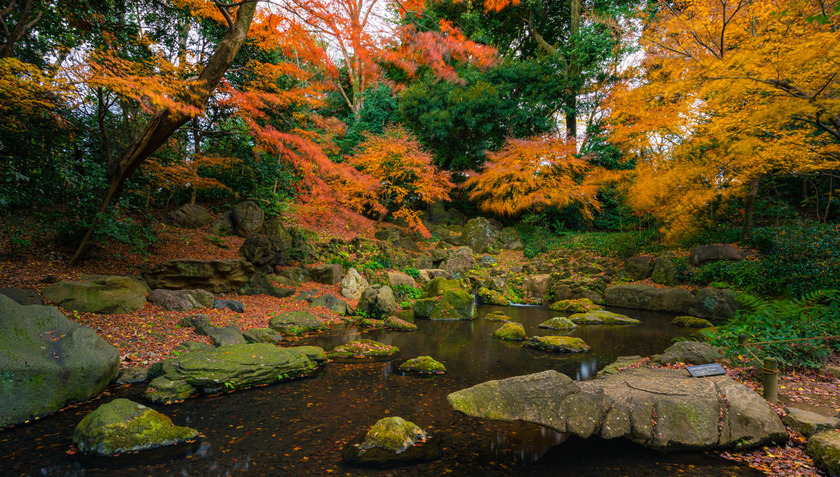
Not only that, the story of maple leaf dishes also contributes to promoting tourism.
Each leaf when baked has an eye-catching golden color and a seductive aroma. Using maple leaves in cooking is also a way to raise awareness of environmental protection. Minoh people understand that, without nature, they would not have the precious ingredients to create unique dishes like Tempura Momiji.
In addition, the process of fermenting and deep-frying maple leaves is not only a method of preservation but also an art in preserving the flavor of autumn through each leaf. This is also a symbol of the connection between the past and the present, between tradition and modernity in Japanese culinary culture.






